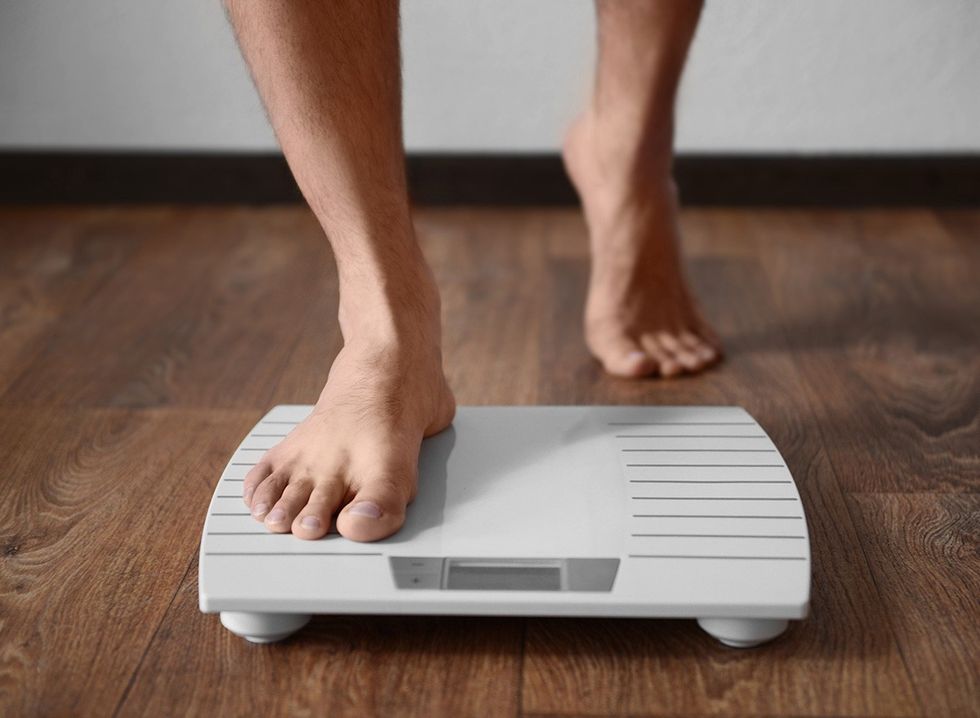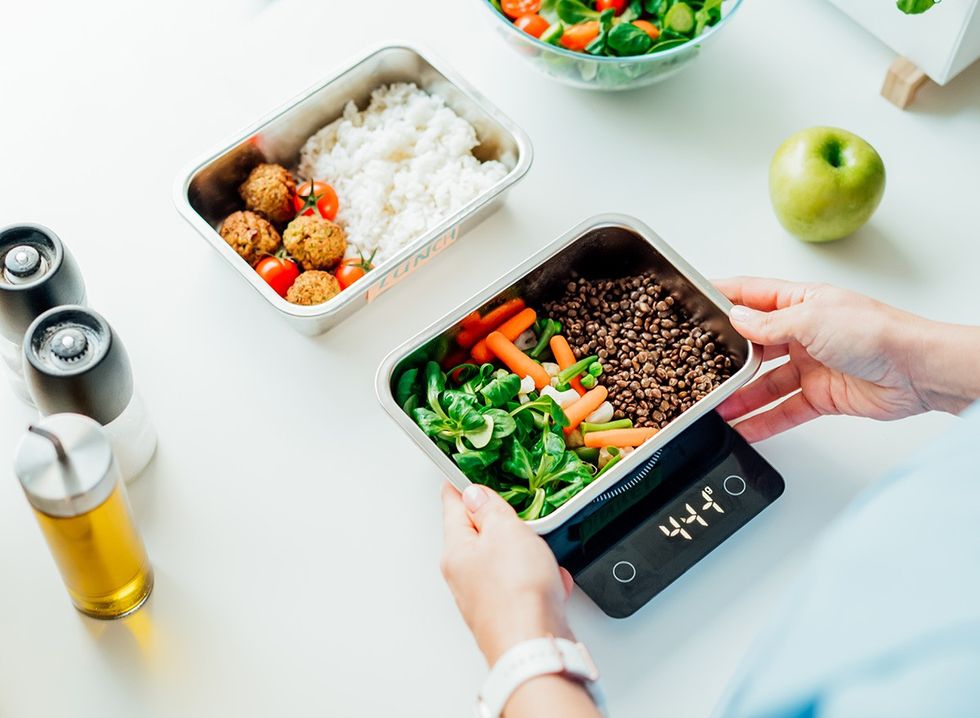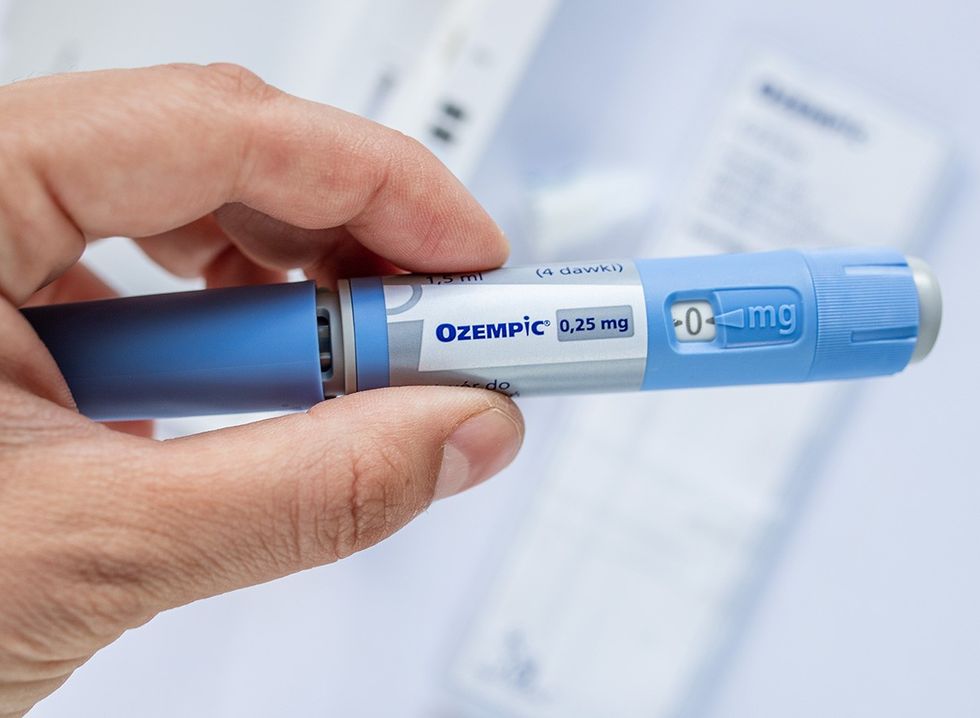The struggle with weight loss can feel overwhelming, even when you're doing everything "right." For Juls, a former competitive gymnast, certified personal trainer, and gymnastics coach, this struggle was all too familiar. Despite her athletic background, she found sustainable weight loss elusive until she combined GLP-1 medications with three specific strategies. At 53, she's not only lost over 50 pounds but has successfully maintained her weight loss for over a year. Here's her complete journey and the three game-changing tricks that worked together to transform her health.
The Breaking Point
"I wasn't happy with the way I looked, the way I felt, and my blood work was not good," Juls recalls about her state in spring 2022. Despite running 3-5 miles five to six days a week and eating healthy, she only lost 5-6 pounds in four months. At 5'1" with a 34-inch waist circumference, she discovered her measurements indicated insulin resistance and potential pre-diabetes.
RELATED: 20 Things You Need to Know About Ozempic and Weight Loss
The GLP-1 Journey Begins
 Shutterstock
ShutterstockIn September 2022, Juls started Ozempic. "The scale started to drop, and I didn't change anything," she shares. Unlike many users, she experienced minimal side effects. "Really I've had none other than fatigue," she notes. When progress plateaued, she switched to Wegovy at maximum dosage. After another four-month stall, her doctor recommended Mounjaro/Zepbound (tirzepatide), which successfully restarted her progress.
Trick 1: The Foundation of Strength Training
 Shutterstock
Shutterstock"When you're on this peptide, you must strength train," Juls emphasizes. "If you don't protect your lean muscle by eating enough protein and doing some strength training, you will lose muscle mass. And that is a disaster." She recommends starting with just two 15-20 minute sessions weekly, noting that this foundation supports the effectiveness of the other strategies by maintaining metabolism and improving insulin sensitivity.
Trick 2: Strategic Food Tracking for Success
 Shutterstock
ShutterstockWhile GLP-1s helped control appetite, Juls discovered that tracking food intake was crucial for optimization. "I was ambivalent about tracking at first because I thought it would be kind of annoying and time consuming," she admits. However, this practice became essential for making informed adjustments when progress slowed. "It really was actually easy, and I'm still doing it to this day because it's just a habit at this point. I actually enjoy it and it takes minutes out of the day."
RELATED: 20 Possible Ozempic Side Effects
Trick 3: The Whole Foods Approach

The third trick proved crucial for minimizing side effects and maximizing results. "I knew not to eat junk food or super high-fat foods," Juls shares. "I've always eaten really healthy and lots of whole foods... that's definitely going to just stress your gut less." This approach, combined with gradually eliminating sugar and alcohol starting in October 2022, enhanced the effectiveness of both her strength training and tracking efforts.
How These Strategies Work Together
 Shutterstock
ShutterstockThe combination of these three strategies created a synergistic effect. The strength training preserved muscle mass and boosted metabolism, while food tracking ensured proper nutrition to support workouts. The whole foods approach minimized side effects, making it easier to stay consistent with both training and tracking. "These peptides help create insulin sensitivity," Juls explains. "They make it easier for your muscles to take up glucose instead of it being stored as fat."
The Mental Transformation
 Shutterstock
ShutterstockBeyond physical changes, Juls experienced a profound mental shift. "You don't even realize you have food noise until you don't have it anymore," she shares, describing the constant mental chatter about food that disappeared. "Finally now at the age of 53, I feel normal. I feel good. I feel in control." This mental clarity has helped her maintain consistency with all three strategies.
A Year of Successful Maintenance
 Shutterstock
ShutterstockNow maintaining her weight loss for over a year, Juls continues her weekly injections while focusing on building muscle and strength. Her maintenance success stems from consistently applying all three strategies: strength training, tracking, and whole foods focus. "This is an ongoing journey that never ends," she reflects. "The key is making sure all the habits and lifestyle changes are something that are going to be long-term."
RELATED: What Happens to Your Body When You Stop Taking Ozempic
Advice for Others Starting Their Journey
 Shutterstock
ShutterstockFor those considering GLP-1s, Juls emphasizes the importance of combining medication with proper strategies: "Don't be afraid of these. If you are a candidate and you've tried everything, go on them. I've never been lazy. I have an incredible amount of discipline. It just doesn't always work for everyone, especially when your metabolic state is already compromised. This helps to make it better." And if you enjoyed this article, don't miss 20 Incredible Ozempic Success Stories of All Time.














 Shutterstock
Shutterstock Shutterstock/Pavel_Kostenko
Shutterstock/Pavel_Kostenko Replenish Stress-Depleted VitaminsShutterstock
Replenish Stress-Depleted VitaminsShutterstock HydrateShutterstock
HydrateShutterstock Maintain Long-Term SuccessShutterstock
Maintain Long-Term SuccessShutterstock Beyond Weight Loss: Understanding GLP-1 BenefitsShutterstock
Beyond Weight Loss: Understanding GLP-1 BenefitsShutterstock If You Lose Weight Soley Because of Ozempic, You Are Likely Losing MuscleShutterstock
If You Lose Weight Soley Because of Ozempic, You Are Likely Losing MuscleShutterstock GLP-1s Signal to the Brain You Are FullShutterstock
GLP-1s Signal to the Brain You Are FullShutterstock And, How Many Pounds Per Week You Can DropShutterstock
And, How Many Pounds Per Week You Can DropShutterstock Shutterstock
Shutterstock Mistake 1: Stopping Too QuicklyShutterstock
Mistake 1: Stopping Too QuicklyShutterstock

 Shutterstock
Shutterstock Shutterstock
Shutterstock 4. Eating Too Little (Extreme Calorie Restriction)Shutterstock
4. Eating Too Little (Extreme Calorie Restriction)Shutterstock What Research ShowsShutterstock
What Research ShowsShutterstock Protein barsShutterstock
Protein barsShutterstock Understanding Your New Relationship with FoodShutterstock
Understanding Your New Relationship with FoodShutterstock

 1. Hydrate the Right WayShutterstock
1. Hydrate the Right WayShutterstock Beware of Comparing Yourself to Online Success StoriesShutterstock
Beware of Comparing Yourself to Online Success StoriesShutterstock
 Indulge in ModerationShutterstock
Indulge in ModerationShutterstock


 Weigh Yourself DailyShutterstock
Weigh Yourself DailyShutterstock
 Shutterstock
Shutterstock Shutterstock
Shutterstock Lean Turkey Taco Lettuce WrapsShutterstock
Lean Turkey Taco Lettuce WrapsShutterstock Garlic Butter Shrimp & Sweet PotatoesShutterstock
Garlic Butter Shrimp & Sweet PotatoesShutterstock 20 Ways to Lose Body Fat Really Fast From Top Nutritionist
20 Ways to Lose Body Fat Really Fast From Top Nutritionist

 I'm a Nutritionist and These 9 High-Protein Snacks Keep My Clients Full While Losing 50 Pounds
I'm a Nutritionist and These 9 High-Protein Snacks Keep My Clients Full While Losing 50 Pounds
 Shutterstock
Shutterstock 2. Processed FoodsShutterstock
2. Processed FoodsShutterstock Shutterstock
Shutterstock Shutterstock/Prostock-studio
Shutterstock/Prostock-studio Shutterstock
Shutterstock Pro TipsShutterstock
Pro TipsShutterstock Shutterstock
Shutterstock Shutterstock
Shutterstock Shutterstock
Shutterstock Shutterstock
Shutterstock Don’t Drink as Much AlcoholShutterstock
Don’t Drink as Much AlcoholShutterstock Soda and Sugary DrinksShutterstock
Soda and Sugary DrinksShutterstock Shutterstock
Shutterstock Eat BreakfastShutterstock
Eat BreakfastShutterstock And Improve Insulin SensitivityShutterstock
And Improve Insulin SensitivityShutterstock Belly Flab Strip Tip: Sugar and Fat Calories Leave Its Mark on Your BodyShutterstock
Belly Flab Strip Tip: Sugar and Fat Calories Leave Its Mark on Your BodyShutterstock Shutterstock
Shutterstock The Drugs Mimic the GLP-1 Hormone Naturally Produced by the BodyShutterstock
The Drugs Mimic the GLP-1 Hormone Naturally Produced by the BodyShutterstock 3. Deep-Fried ItemsShutterstock
3. Deep-Fried ItemsShutterstock